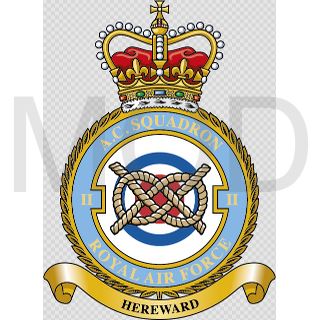No 2 A.C. (Army-Cooperation) Squadron, Royal Air Force: Difference between revisions
Jump to navigation
Jump to search
No edit summary |
No edit summary |
||
| Line 12: | Line 12: | ||
===Origin/meaning=== | ===Origin/meaning=== | ||
The Wake Knot alludes to Hereward the Wake who defended the Isle of Ely from the Norman Invaders. And thus alludes to the Army Cooperation role of the Squadron. | The Wake Knot alludes to Hereward the Wake who defended the Isle of Ely from the Norman Invaders. And thus alludes to the Army Cooperation role of the Squadron. | ||
The Badge was | The Badge was granted in May 1936. | ||
{{media}} | {{media}} | ||
| Line 18: | Line 18: | ||
[[Category:Military heraldry of the United Kingdom]] | [[Category:Military heraldry of the United Kingdom]] | ||
[[Category:Air Force heraldry]] | [[Category:Air Force heraldry]] | ||
[[Category:Granted 1936]] | |||
Revision as of 10:19, 16 July 2020
| Heraldry of the World |
| British heraldry portal Civic heraldry of the United Kingdom |
|
NO 2 A.C. (ARMY-COOPERATION) SQUADRON, ROYAL AIR FORCE
History: Formed 13 May 1912 at Farnborough.
Official blazon
Three concentric circles (The RAF roundel) overall a Wake Knot Or,
Origin/meaning
The Wake Knot alludes to Hereward the Wake who defended the Isle of Ely from the Norman Invaders. And thus alludes to the Army Cooperation role of the Squadron. The Badge was granted in May 1936.
Contact and Support
Partners:
Your logo here ?
Contact us
© since 1995, Heraldry of the World, Ralf Hartemink 
Index of the site
Literature: Image from Defence Brand Portal Ministry of Defence












